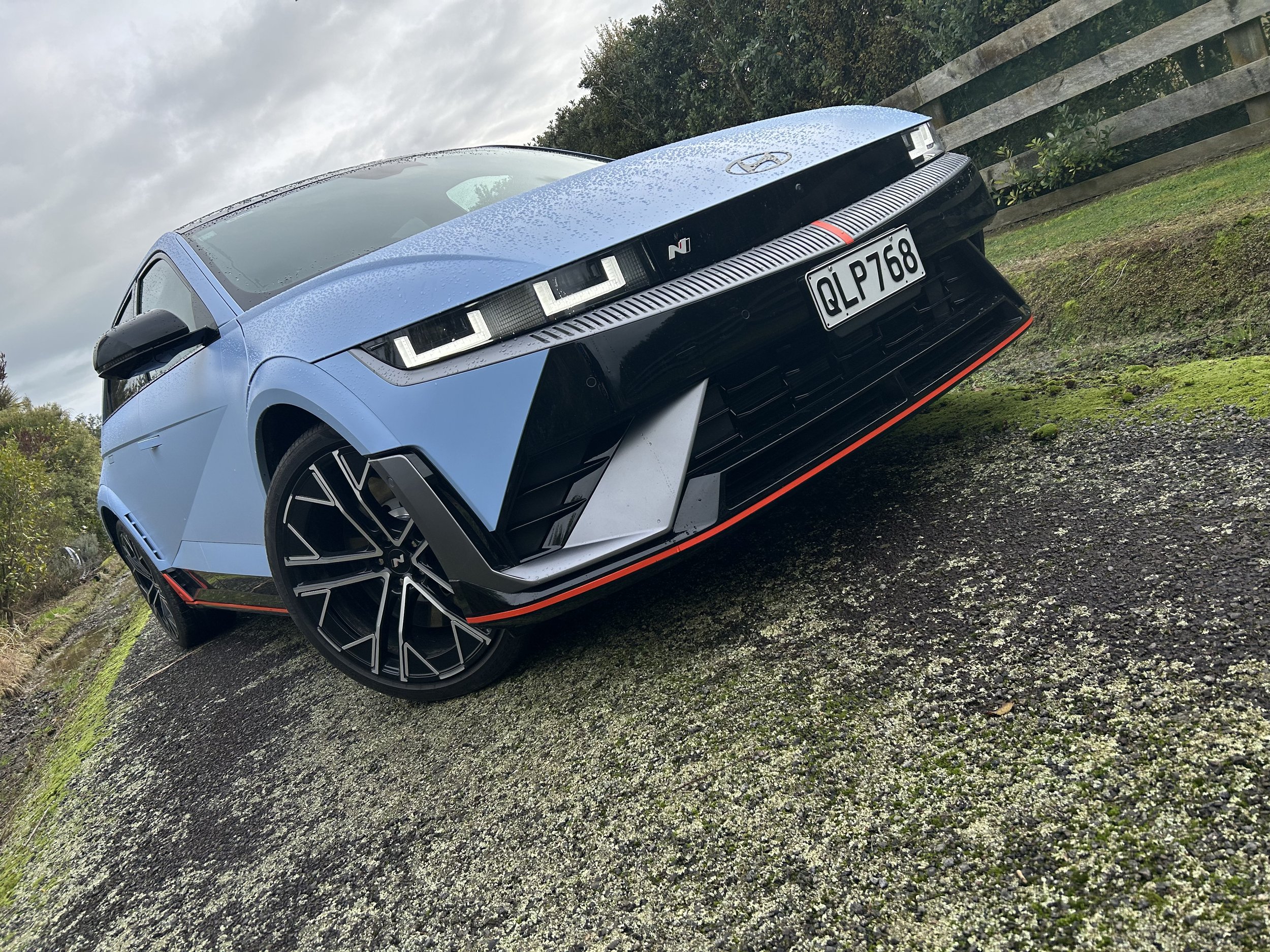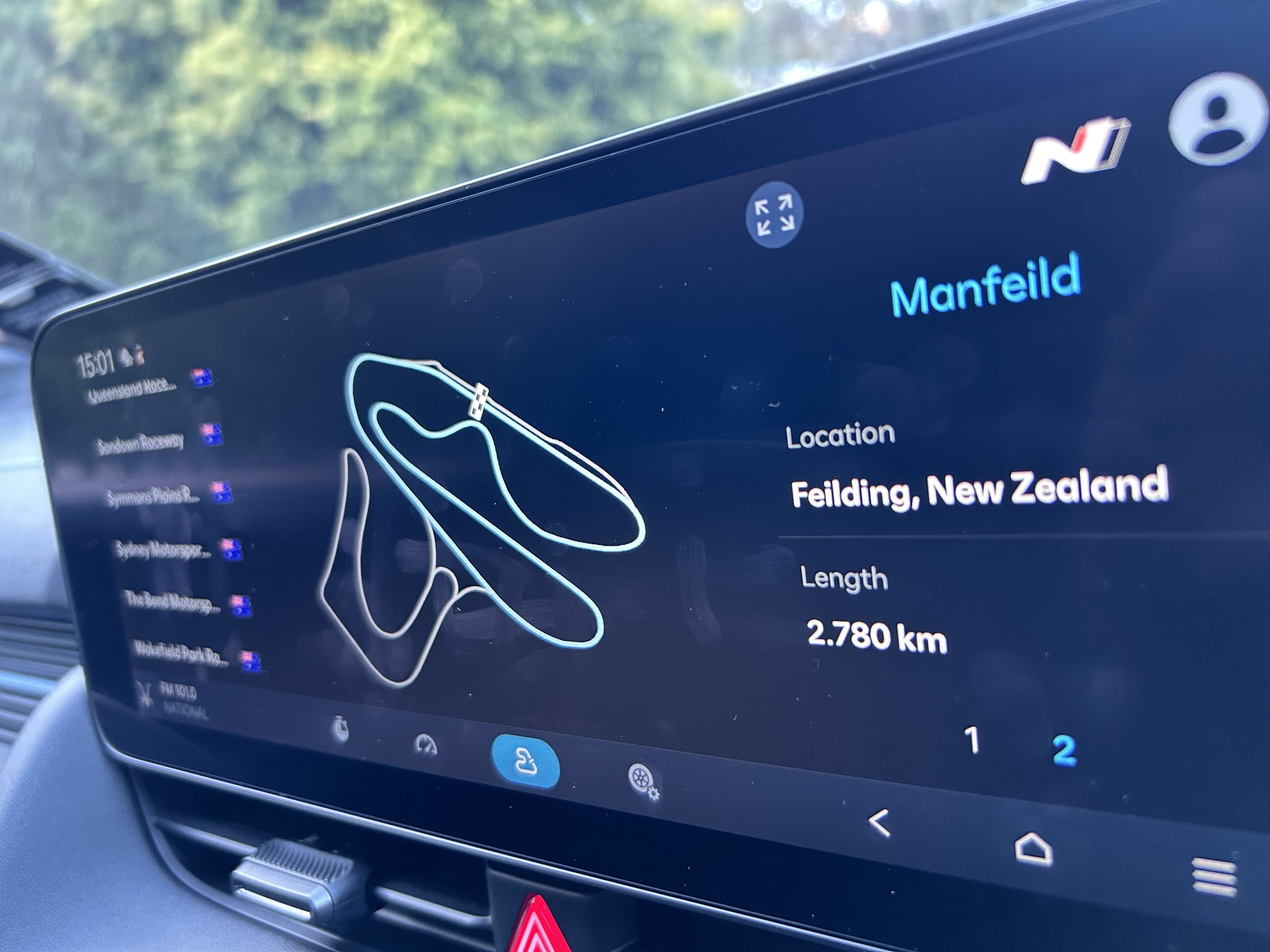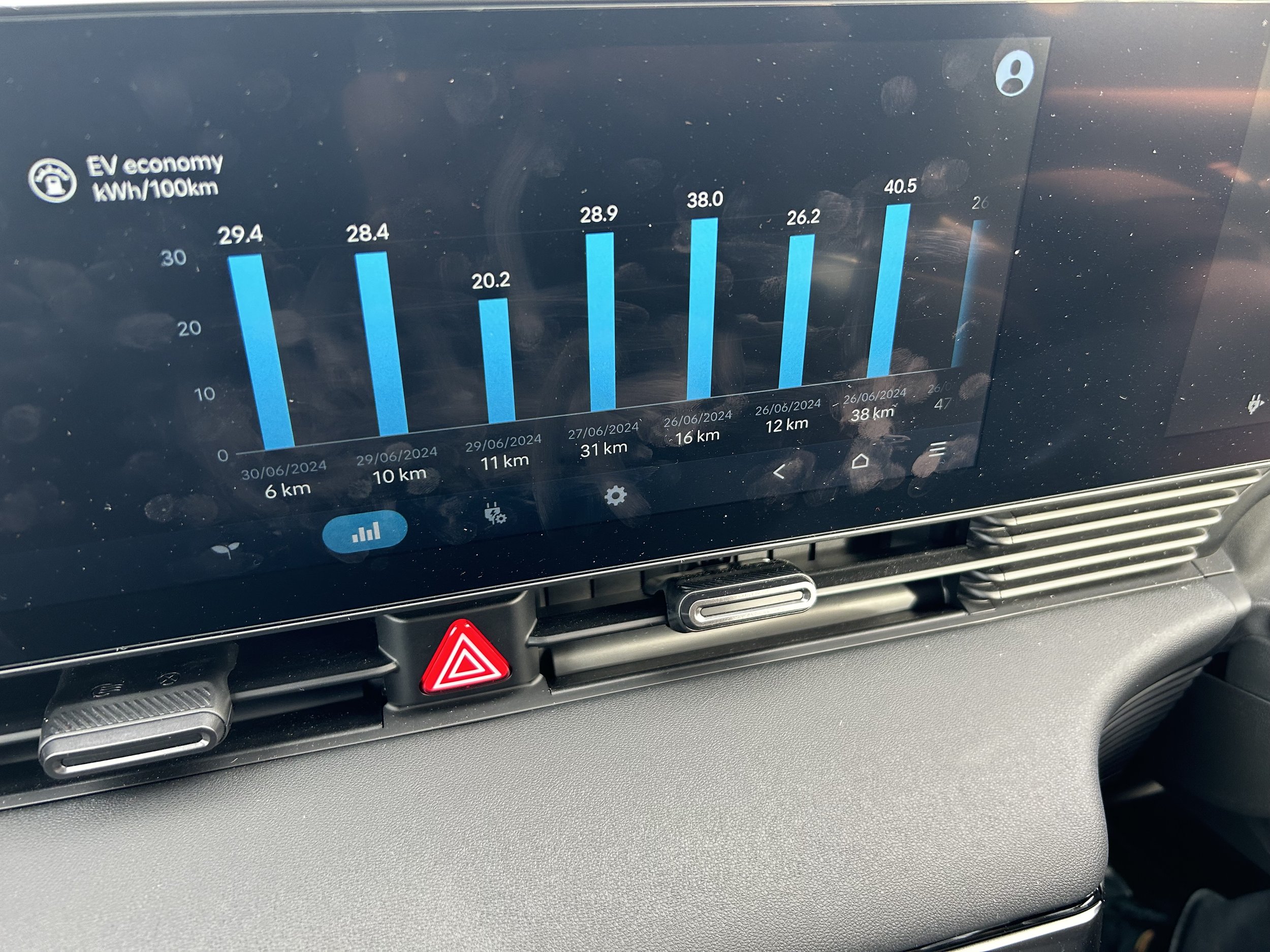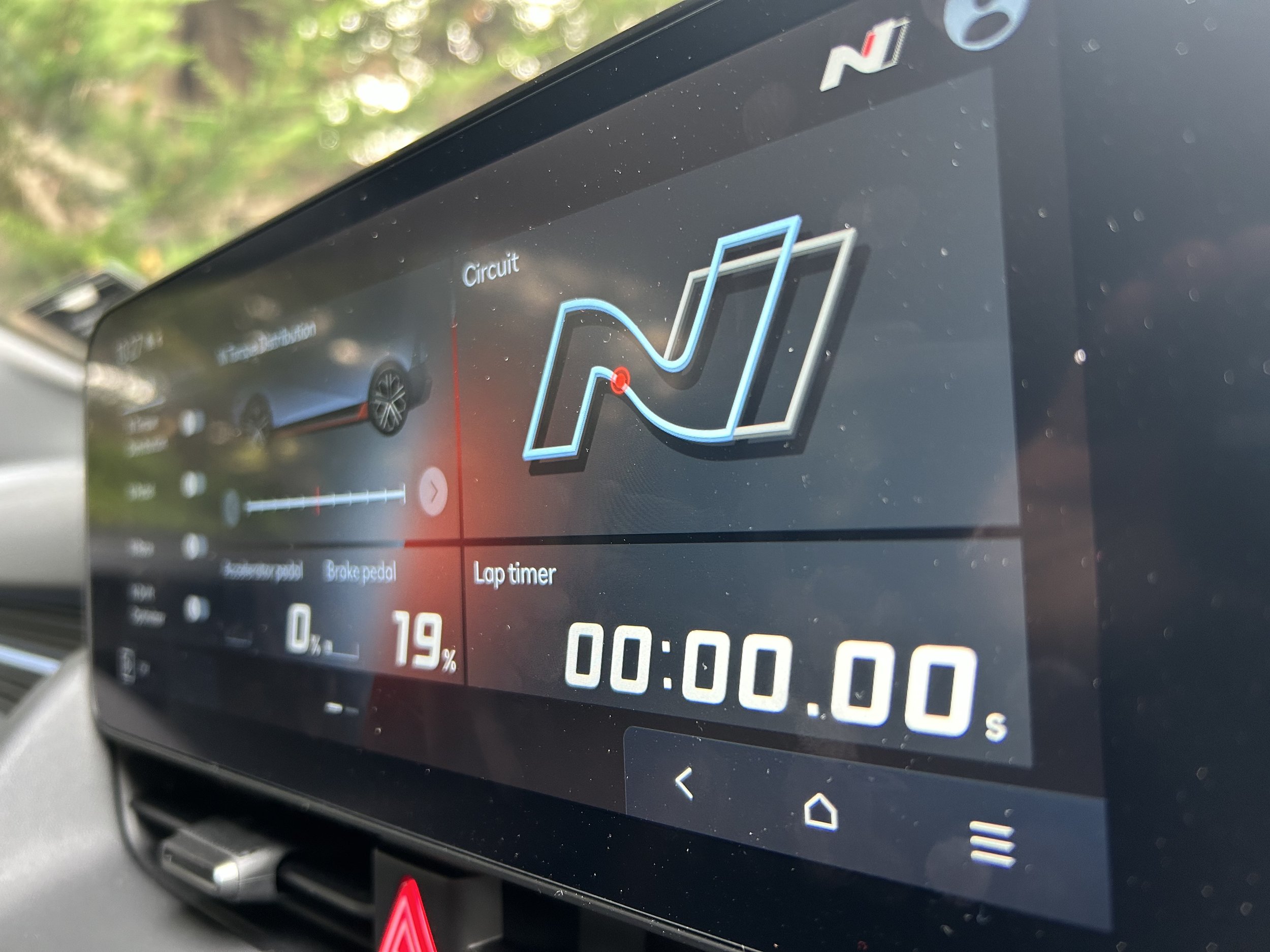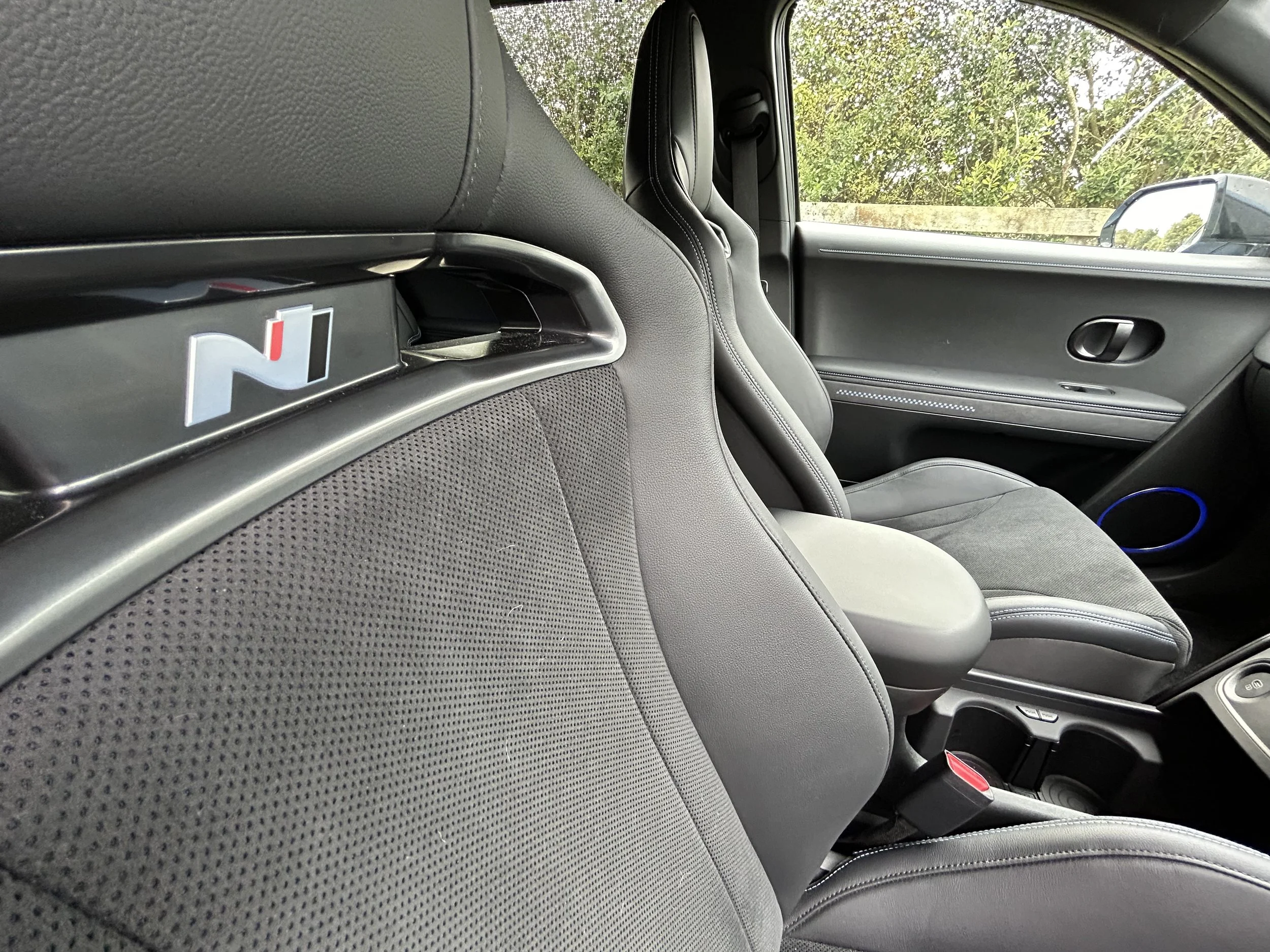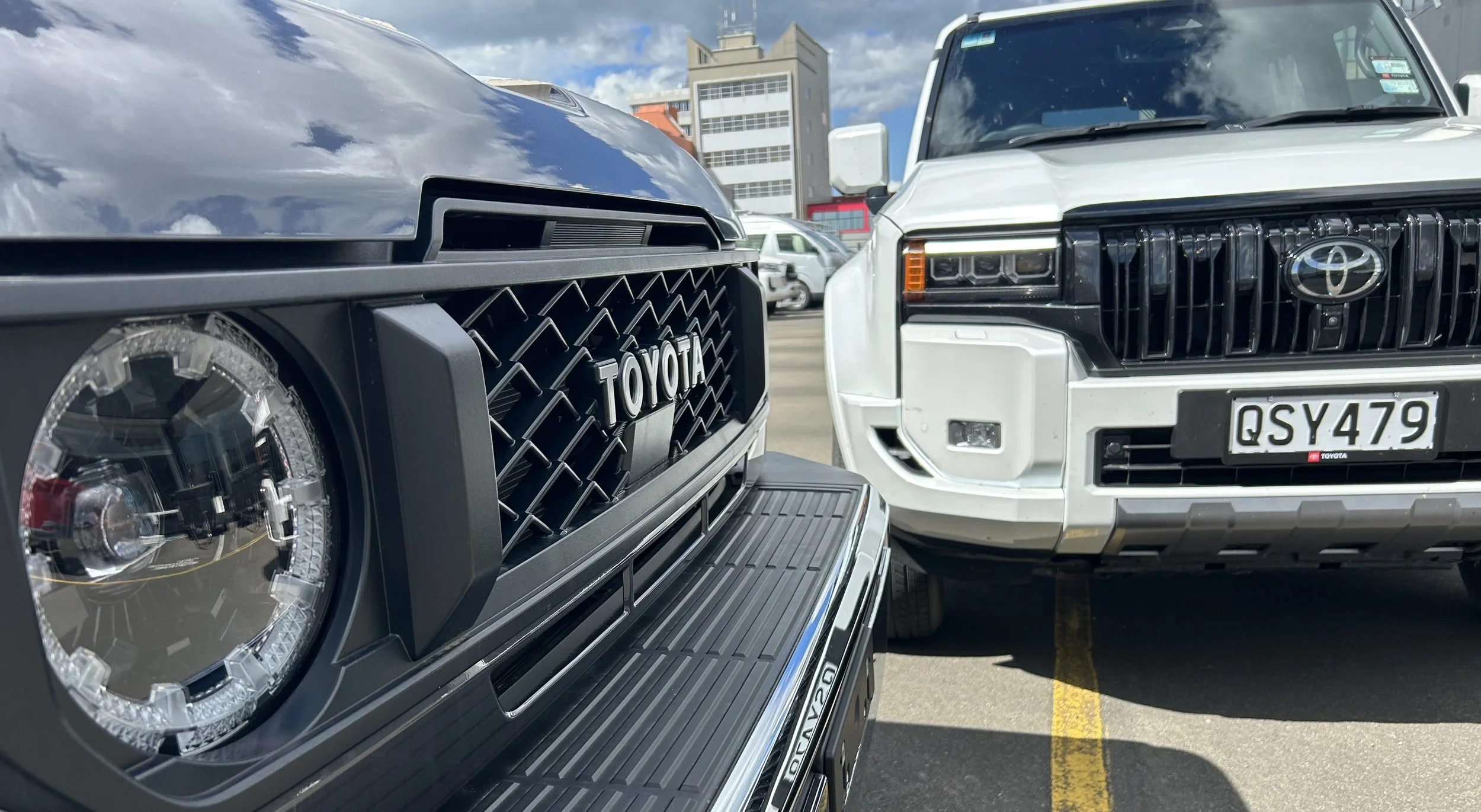Hyundai Ioniq 5 N roadtest review: Zip zap-tastic genre hero
/Is this ‘full grin’-fettled model good enough to convince petrolheads that electric power can deliver their kind of car? Hell yeah!
Price: $134,900
Drivetrain: Twin electric motors, 166kW front/282kW rear; 350/390Nm; single speed auto, e-AWD.
How big: 4715mm long, 1585mm high, 1940mm wide.
We like: Totally nails a tough remit; just $17k more than most expensive standard Ioniq and twice as good; set to stand as a landmark of EV-lution; has Pike’s Peak cred.
Not so much: As brilliant as it is to have so many enthusiast settings, some are potentially too nerdy for short-term users; going hard destroys 21.2kWh/100km economy and 448kms’ range; we couldn’t hit the track (circuits, time to wake up to the realities of EV world).
ANYONE at Pike’s Peak in June would have seen the car here utterly nailing North America's most dangerous and historic hill. Sorry, mountain.
With 156 turns and ascending over 1438 metres above sea level, this historic annual race is no pushover.
Hyundai pitched up to the Colorado run with three examples of one of the meanest, most track-capable EVs ever created; two in highly tuned form, created in a hurry. One as you can buy it.
An event dedicated to heroic speed doesn’t favour rushed prep. Competitors get just one shot at an official run. Makes chasing glory tend to put in at least a year of prep, spending millions of dollars.
Volkswagen, Peugeot, and Ford, for instance, all built completely custom silhouette racers with colossally powerful powertrains and physics-bending aerodynamics that hardly bore a relation to a terrestrial object, let alone a production car.
Of Hyundai’s cars, two were shaped for the run … but in less than six months and with a tight budget. The fastest of those, driven by works world rally driver Dani Sordo, clinched the exhibition class with a remarkable time of nine minutes and 30.852 seconds. The second car in that TA Spec, driven by Randy Probst, followed closely; with 9:55.551.
The third? It’s story (told on is perhaps all the more remarkable. In production spec, driven by a rookie … it clocked 10:49.267.
So, basically, around 90 seconds difference between the one that was honed for the job and the car that you and I can pluck from a showroom. Astounding. The full story of the N effort is told in the excellent Youtube documentary series ‘Lightning in the Throttle’ made by Hyundai USA (Randy Probst’s story of this epic effort is also excellent).
Bu, then, so is everything about this Ioniq 5 flagship. NZ has had to wait its turn for this model and it lands hefting international awards, many meted by media.
A week with this car left firm impression every gushing comment you’d heard or read is well deserved. Not simply because it is an exceptional electric car … we kinda knew it would tick that box, given how good the standard Ioniq 5 is.
What really makes it a winner is affirmation of it being an amazingly impressive electric execution of everything that is ’N’.
No-one would ever praise a combustion engine car that behaved like an electric.
Why, then get excited about an electric that is so utterly convincing in mimicking a performance petrol it had my wife absolutely convinced there was fuel being burned by a non-existent engine under that bonnet and CO2 pumping out the imagined exhaust pipe?
Because it’s N. If you don’t get why that’s important - and some electric car buffs simply won’t - then you just don’t understand what Hyundai’s performance brand does and why it has created huge fan support in its relatively short period of existence.
As stupid as the concept of an EV with baarping fake exhaust noises and an incredibly authentic ‘gear changing’ feel might seem … well, it’s really not. Because it just wouldn’t be an N car without. It is certainly a better kind of N for having those elements. Trust me, it really is.
N is all about exceptional performance. N is also about rivalling the world’s best pedigree mainstream-affiliated performance sub-brands. One it has to better, of course, is ‘M’ - the BMW specialist whose previous boss, and many of his finest people, were head-hunted from when Hyundai determined it needed it’s own pukka performance division. The M guys going to N was the heist of the century. There are great M cars; but nothing from Munich matches this Hyundai.
To be fair, nothing from Tesla does either. Most certainly not at Pike’s Peak this year. Musk had cars there. The Hyundais ate their lunch. (I’d say ‘dust’, but the whole climb is sealed now).
Two challenges with the road car. For anyone driving it in the right frame of mind, who understands the context, one will be thinking of a fresh superlative to describe how it imparts. I can’t.
The second is down to the close-mindedness of the people who run the venues it will shine brightest at. this is fully honed competition-set car. Motorsport NZ is keen to see electrics racing, with caveats. Motor-racing tracks are not. There are no circuits here that allow EVs to run without restriction; some won’t allow them at all.
That’s a massive shame. We tried, with Hyundai NZ’s full and enthusiastic blessing, to take the test car to the track; actually an area adjacent to Manfeild Circuit Chris Amon that’s been retired from racing and is now mainly used for young driver training. We didn’t plan anything high speed; just some runs to demonstrate the competition modes, most notably the setting that allows it to accomplish lurid drifts, for a video.
Health and safety is a necessity that cannot be ignored, and should not be belittled - having worked at this venue, I understand the need. But as soon as the car was identified as electric, everything got so much harder, I’d assume because of the perceived risk of fire. The plug was pulled on this exercise with realisation we needed indemnity for the entire multimillion dollar venue.
This HAS to change. Not just for the fact that performance electrics are much better at running without issue than they’re given credit for; not least this car. It was exhaustively developed at Germany's Nurburgring, very probably without any such incident (because the place is so well photographed had it, we’d have known).
The car industry and motor racing are on a collision course; electrification is the new key battleground for makers as they race to cut emissions and reduce, or wholly remove, reliance on fossil fuels. While racing fans are not being won over easily, it is the future. Makers will want to invest in developing the technology and then promoting it and motorsport is the perfect avenue for that. And motorsport venues are the best place.
Moving on …
First to thing to know about the Ioniq N is that it is not just the standard car with warpaint, as perhaps the equivalent EV6 GT is in the Kia family.
When Ioniq went to N, it underwent a very comprehensive rework, not just to the hardware but also the body.
In the sub-marque’s familial ‘hero’ blue (as used by the World Rally Car product) more than the contrasting black detailing front, rear and on the side sills stands out. The N model has additional cooling vents and it gets an aerodynamic overhaul extending to a lower front apron, new roof spoiler and rear diffuser. That's all highlighted by an orange stripe, while the wider tracks are accommodated by beefier bodywork, too.
Twenty-one-inch alloy wheels sit on wide Pirelli P Zero tyres and the ride height is lower than the standard car’s; it has a squat stance all its own. The 'parametric pixel' lights are complemented by 'chequered flag' reflectors in the rear bumper, too.
That motif can be found in the door sills as well on entry to a heavily N-branded interior that's darker in theme than the standard Ioniq 5's. It keeps a five-seat layout, but the front chairs are new low-slung bucket seats with tactile upholstery and illumination of the N logo.
A thick-rimmed steering wheel has paddles behind. The standard twist-forward-to-go drive selector retains though there are additional buttons on the wheel. The pale blue ‘Drive Mode’ opens up a vast menu of customisation options for the driving systems on the touchscreen. A driver's favourite selection of settings can be programmed into two distinct modes, quickly selectable from the N buttons below the spokes of the wheel. The bright red button, meanwhile, is marked "NGB" for N Grin Boost and it allows access to the electric motors' full performance for up to 10 seconds at a time.
There’s a lot here: Powerful electric motors front and rear for all-wheel drive; by default they combine to put out 454kW. Press NGB and that's upped to 478kW. And it's backed up by a huge 770Nm of torque. That helps explain how this 2235kg hatchback hits 100kmh from rest in just 3.4 seconds...
Even when all the performance involvements are in play, there’s nothing about the way the Ioniq 5 N drives on the open road to suggest it beyond edge on the edge of control, but you are very aware that, when absolute settings are engaged, it very much enters a highly involving and utterly enveloping extreme.
Those ‘track’ settings are a clear indicator of brand expectation that a driver will do the right thing, and employ those entertainments in the best environment. That is why it has tracks mapped into it; so that you can data log and improve lap times. Fat chance.
In the meantime, it does compensate by also being an excellent road car, to point where the argument as to resetting the argument about whether battery cars can be good performance cars.
That point until now has not been invalid. I’ve driven more than a few fast EVs that do the (now surely passed?) silent and violent kick-off well and impress with overall pace, but feel all too remote in dynamic feel and are lacking any sense of one-ness.
The Ioniq 5 in its standard dual motor format is among those; that the N that bases off that factory recipe simply is not says everything.
The special model’s clear sense of character lends very good insight into the level of commitment and competence from the development team, which as said comprised some of the best talent in the industry.
This car stands every chance of changing the most sceptical EV-opposed mindset; as others have noted anyone worried that an electric future might spell the end of fun on four wheels can rest easy.
Here is a car that’s huge fun to drive … and also happens to be electric. No matter which way you approach it, it’s a brilliant performance opportunity, coming with a brilliantly interactive chassis, superb steering feel and extremely decent brakes.
The tuning is so good you have to consistently remind yourself it’s electric, is quite sizeable and is unavoidably hefting considerable weight. When pushing on, there’s no sense of it being heavy. The delicacy and delightfulness of the balance, in fact, the pedigree driving position and the best seats yet for this product makes this version of Ioniq 5 feel physically smaller and more intimate than any other.
The ingredient that outwardly seems so cheesy is honestly a winner. Without trying them, you will struggle to comprehend how a sound generator and virtual gearbox can truly add another positive layer. Surely there’s nothing like the real thing? Try it and prepared to be astonished.
Perhaps it is because I’m one of those who still finds engine noise and gearchanges to be an essential part of a good performance car.
By all means, for general driving, keep the car in the standard drive settings that allow it to drive in the usual electric-centric silent mode; it’s as refined as the standard Ioniq 5, then.
But when the road looks tasty, it really is worthwhile activating, through engaging N e-Shift and N Active Sound Plus, the elements that genuinely add to the driving experience, because the car feel 10 times more interactive.
Sure, it’s almost comically intrusive, too, but the levels gone to to ensure old-school N-authenticity is something else. From inside, at least, those bombastic blasts are pitch-perfect to those from the Kona N we drove last year. That they’ve managed to create a ‘transmission’ that so perfectly emulates the full complement of jerks, bogs and imperfect torque curves you would get with a real gearbox is crazy, but in a good way.
The quality of the illusion is so good you you can get on with driving it as you could those wonderful petrol N cars that provided inspiration without feeling as if it is no less credible. Dive bombing into corners, nipping the brakes and smacking down a cog or two on point of entry, steering the car on the throttle … it’s mad that an electric can emulate an N-crafted i20, i30 and Kona so accurately. And you shouldn’t miss it for the world.
Contention that the instant reactivity of the electric forces and that a very cleverly tuned rear differential actually make it better than the combustion choices from the past is not without merit. This thing can scoot and shoot with amazing reactivity. Turbo lag, the slight moment as mechanical components enact … that’s eradicated with a battery car.
There are some challenges. Yes, the ride is firm; not to point of rattling your bones, but you’re aware that this is the sporty one. While assuming that press fleet product always gets a hard life, the state of the tyres on this one suggested it’ll be going through those more rapidly than any other version. But that’s just the case with performance car.
Of course, drive it hard and, yes, the battery will deplete accordingly. It’s not absolutely crippled by this - you would confidently see around 380kms from a charge even when having a bit of fun - and, of course, if it operates with a very light foot, that range would be higher again. All the same, the consumption rate does highlight how prescient it was for Hyundai to have created an 800 volt platform, allowing for very fast DC replenishment.
Owners will do well to take time to study the screen menus; it has a swag of specific settings for specific driving; even in the performance zones alone, there’s much to experiment with. That it lets you completely tailor the driving experience to your preferences and can be whatever you want it to be i fantastic thing, but don’t expect to immediately get on top of all that it provisions.
Second thought - Callum Crawley
The Ioniq 5 N is a complex and nuanced piece of technology, one which just happens to be wrapped up in a performance car wrapper. There’s so much to discuss with this car that if I was to delve into the details, you’d be settling down for an hour long diatribe.
I experienced a mix of commuting, state highways, and fun back roads; just within 500 metres of getting behind the wheel for the first time, it was immediately obvious that it was unlike any other electric vehicle I have yet experienced.
Would you for $130,000?, At first glance the bright matte blue paint, orange accents and slightly plasticky interior aren’t necessarily what you’d expect from a brand that’s trying to gain a stranglehold on the premium midsize electric SUV market. However, keep looking a little longer, and the fun touches on this thing aren’t just sprinkled on, they’re absolutely lathered.
The seats, for example, are firm and supportive, and for me at least, comfortable enough in combination with the adaptive dampers to be suitable for a daily driver.
Compared to the regular Ioniq 5, this N model sits you about 40mm lower, enhancing the inherent benefits and feel of a battery electric vehicle with their low centre of gravity.
The driving position takes a back seat to the driving experience as soon as you hit a wee button on the steering wheel.
Hitting that N button on the steering wheel immediately changes the character; a civil and quiet commuter becomes a raucous, edgy performance car.
With 478kW it’s fast; you get enormous amounts of power, incredible levels of response, instantaneous torque and unrelenting acceleration.
The element that appeals is when it simulates a dual clutch gearbox as well as the power delivery and sound of a four-cylinder turbo car.
In my opinion, the sound effects would be almost unacceptably gimmicky if the ‘feel’ of the drivetrain didn't match the audible cues, and I flat out just wouldn't like them. The comparison I'd make would be like a CVT simulating "gearshifts", it adds nothing to the experience whilst at the same time reducing performance.
But here, when you’re in N E-shift and active sound plus mode, it genuinely feels like a dual clutch with a super punchy 2.0-litre engine. The programming is really impressive; from the hard cut when you hit the "limiter", to the drivetrain backlash on mid throttle shifts, it makes the driving experience so much more engaging.
In the analytical side of my brain I know that I'm being tricked, but I don't even care! Plus, knowing what gear you’re in and how many revs you’re pulling makes it much easier to gauge speed, and by extension braking points and when to turn in.
What that all means, is that everything from bumbling around town to a spirited drive on a nice windy road becomes a lot more engaging for you as the driver. Yes, put it in eco or normal mode and you can cruise along silently if you want to, but that’s not the reason you’d choose this car.
Hyundai have done a magnificent job of controlling the 2.2 tonne weight, so steering is fairly positive, and the car takes turns with an assured confidence. Everything up to about 80 or 90 percent is a super fun, intuitive driving experience.
It’s only when you approach the limits of the car’s handling that some flaws expose.
Most of the time, the all wheel drive system has an amazing ability to fire you out of corner. However, when you try to ask for just a little more than the tyres can handle, it becomes a touch unsettled and unsure, hesitating about putting down the power even when in the sportier esc modes
Granted, most people will likely never approach that level of commitment, particularly in a road setting or with passengers, but it is worth mentioning nonetheless.
You’d think that with the myriad of different modes and settings this car offers you’d be able to tune out that hesitation to your hearts content. However, I found that to not quite be the case.
Firstly, in both the torque distribution setting, as well as the specially optimised drift mode, you aren't able to use them with the simulated gearbox. This takes away a key element of control. Not having that audible feedback as to your wheel speed as well as wheel slip is detrimental to the ease with which you can play with the car. I found that on a slippery wet surface, which should make for the easiest and most predictable level of control over wheel slip, I was still left having to react to what the car was doing, rather than working with it harmoniously.
Putting the power down out of a slow corner was still a jerky and unnatural affair, leaving me wanting for a more natural feeling limited slip differential, rather than the electronic and somewhat reactive implementation here.
That combined with the immense power and how quickly that can generate large amounts of wheel speed made for nervousness near the limit.
With all of that said, for most of the time that I drove the Ioniq 5 N, I couldn’t help but smile and laugh, it’s a great mix of childishly entertaining and deeply impressive engineering. An absolute hoot, and blisteringly fast to boot.

